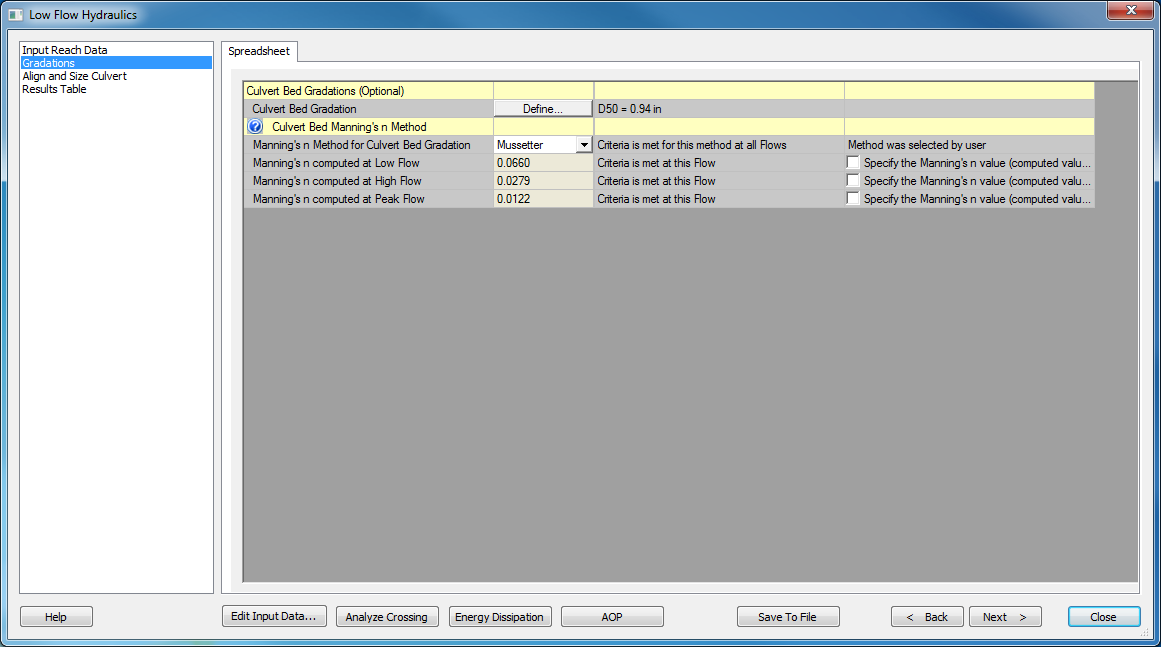HY8:LOWFLOW SS Gradations: Difference between revisions
(Created page with "=AOP Stream Simulation, Gradation Data= Image:LowFlowGradation.jpg The gradations are used to determine the Manning's n value for the channel and culvert as well as the s...") |
No edit summary |
||
| Line 1: | Line 1: | ||
= | =Low Flow Hydraulics, Gradation Data= | ||
[[Image:LowFlowGradation.jpg]] | [[Image:LowFlowGradation.jpg]] | ||
Revision as of 18:02, 24 April 2015
Low Flow Hydraulics, Gradation Data
The gradations are used to determine the Manning's n value for the channel and culvert as well as the stability of the embedment within the culvert. This step is NOT required for the Low Flow Hydraulics method! It is provided to allow the user to use a computed Manning's n value and to provide embedment check computations. If your culvert has a metal, plastic, or concrete floor, you should not enter gradation data and if there is gradation data already entered, you should clear it out! The gradations should only be used on embedded culverts or open-bottom culverts.
Manning's n Methods
From HEC-26, Appendix C:
An appropriate equation selection must consider the basis on which the equation was developed and how it might apply within a closed conduit. The Bathurst, Jarrett, and Mussetter equations tend to better represent n values on steeper channels or channels with larger roughness elements. Limerinos and Blodgett attempt to encompass a wider range of conditions. The Bathurst equation depends on channel top width for calculation of Manning’s n (See Kilgore and Cotton (2005) for details). However, in a closed conduit, top width does not monotonically increase with depth as it does in a natural channel. Therefore, the Bathurst equation would be problematic to apply within a culvert.
